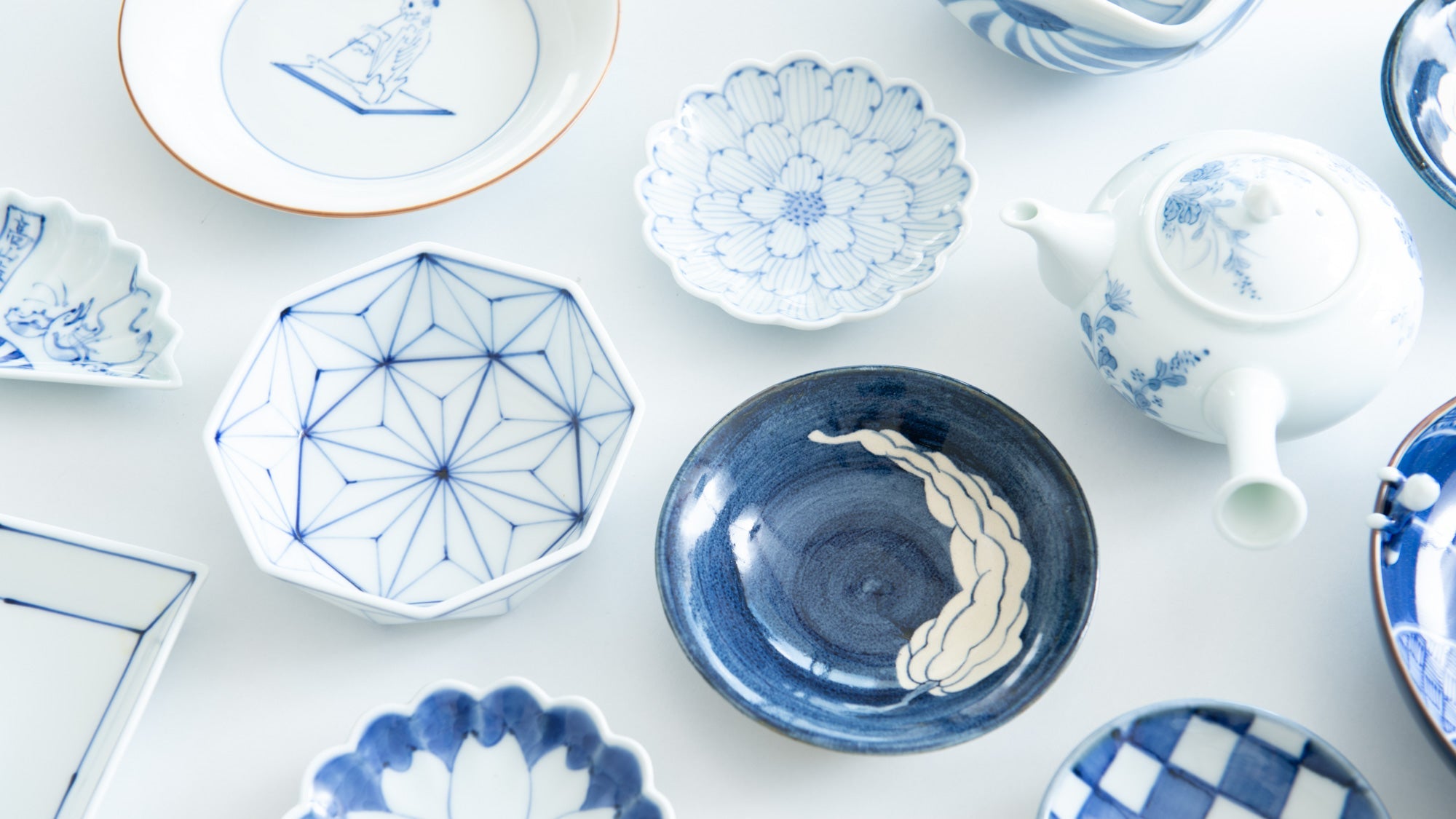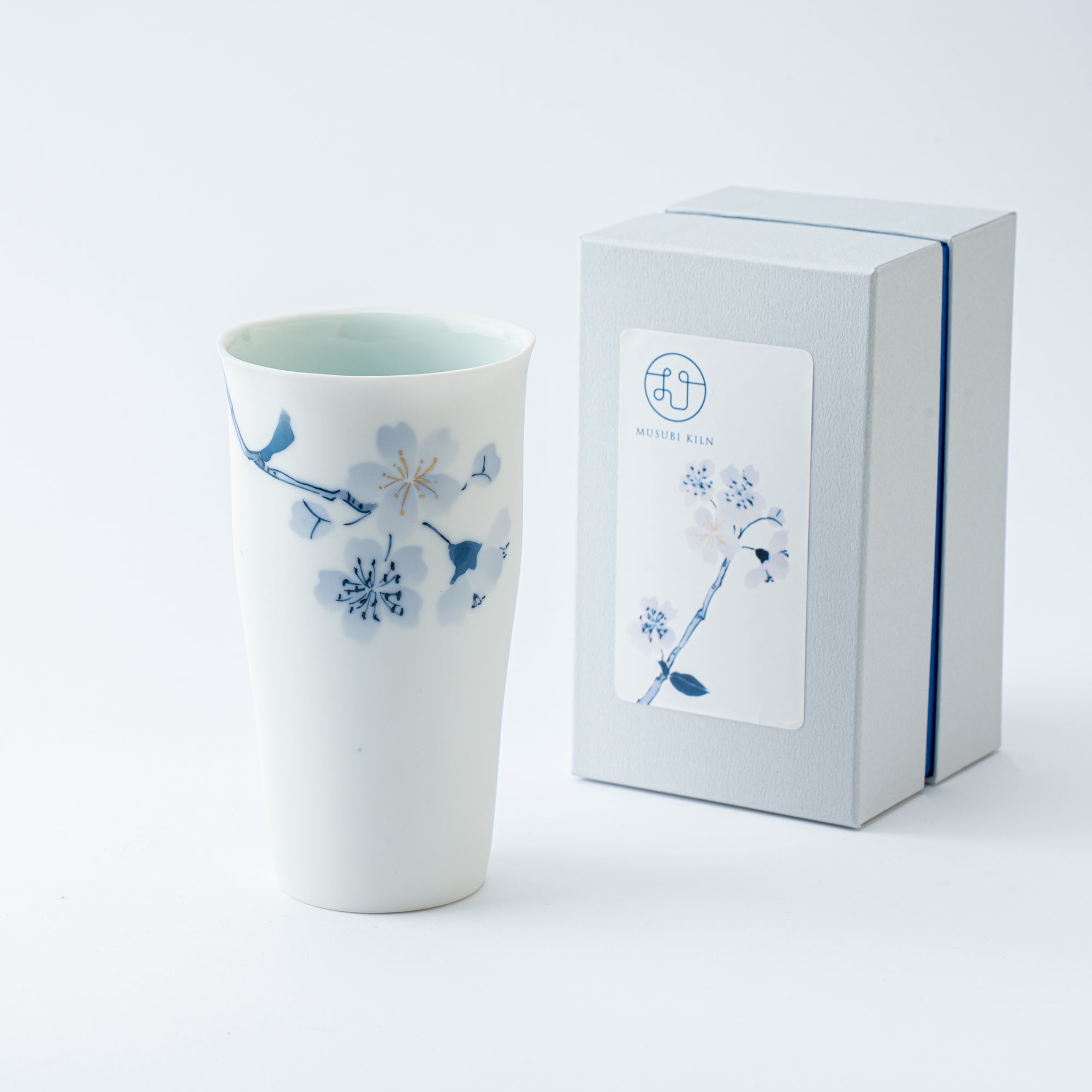
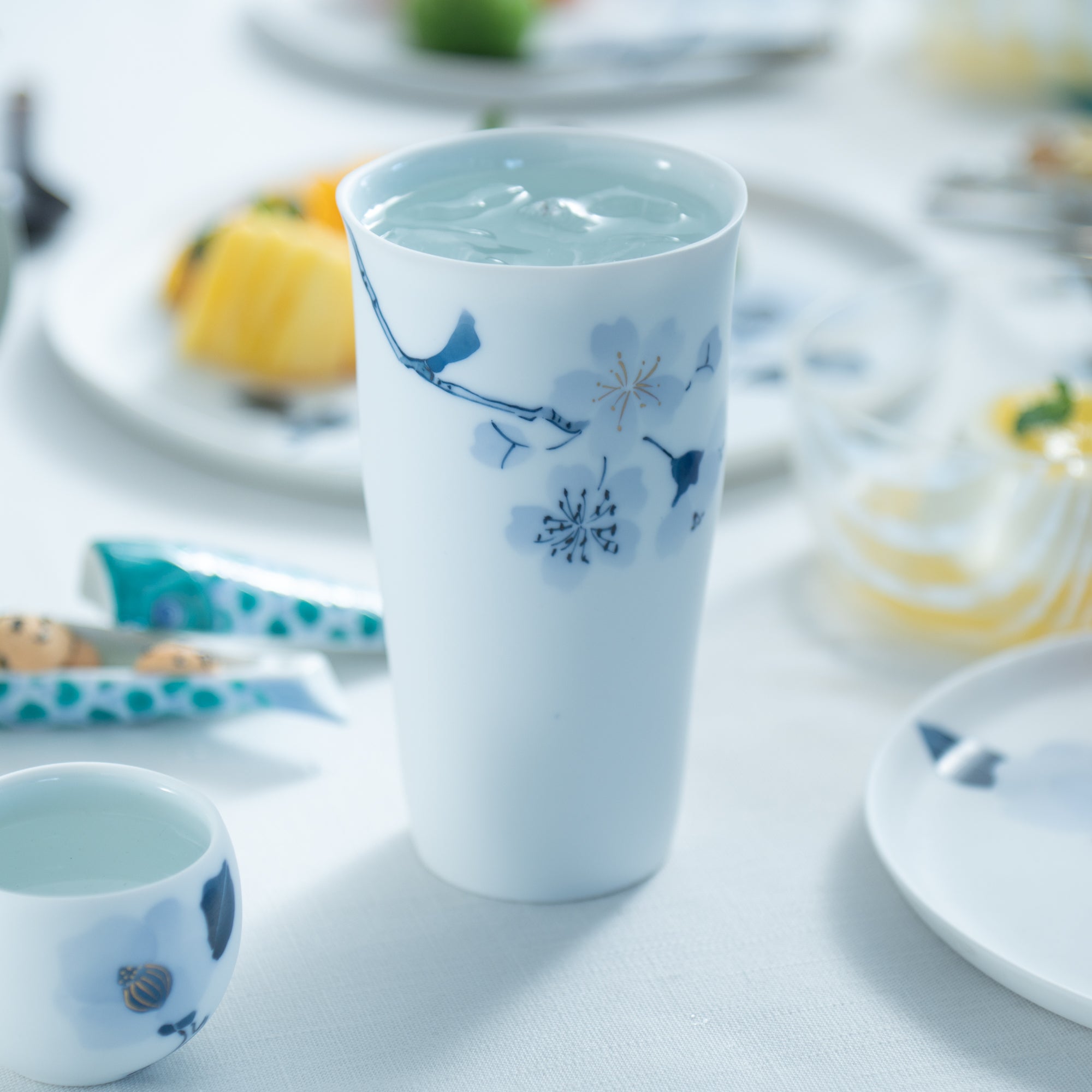
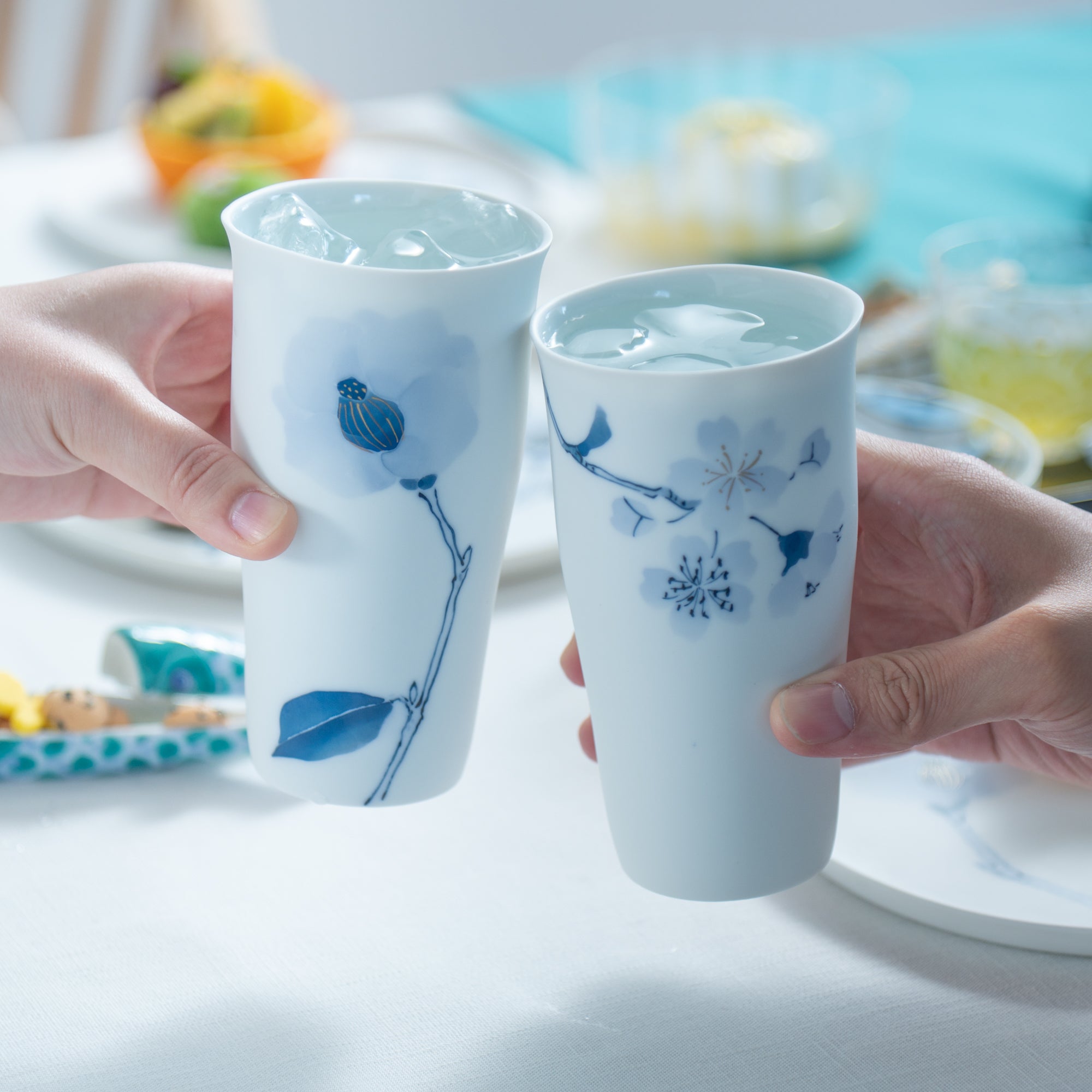
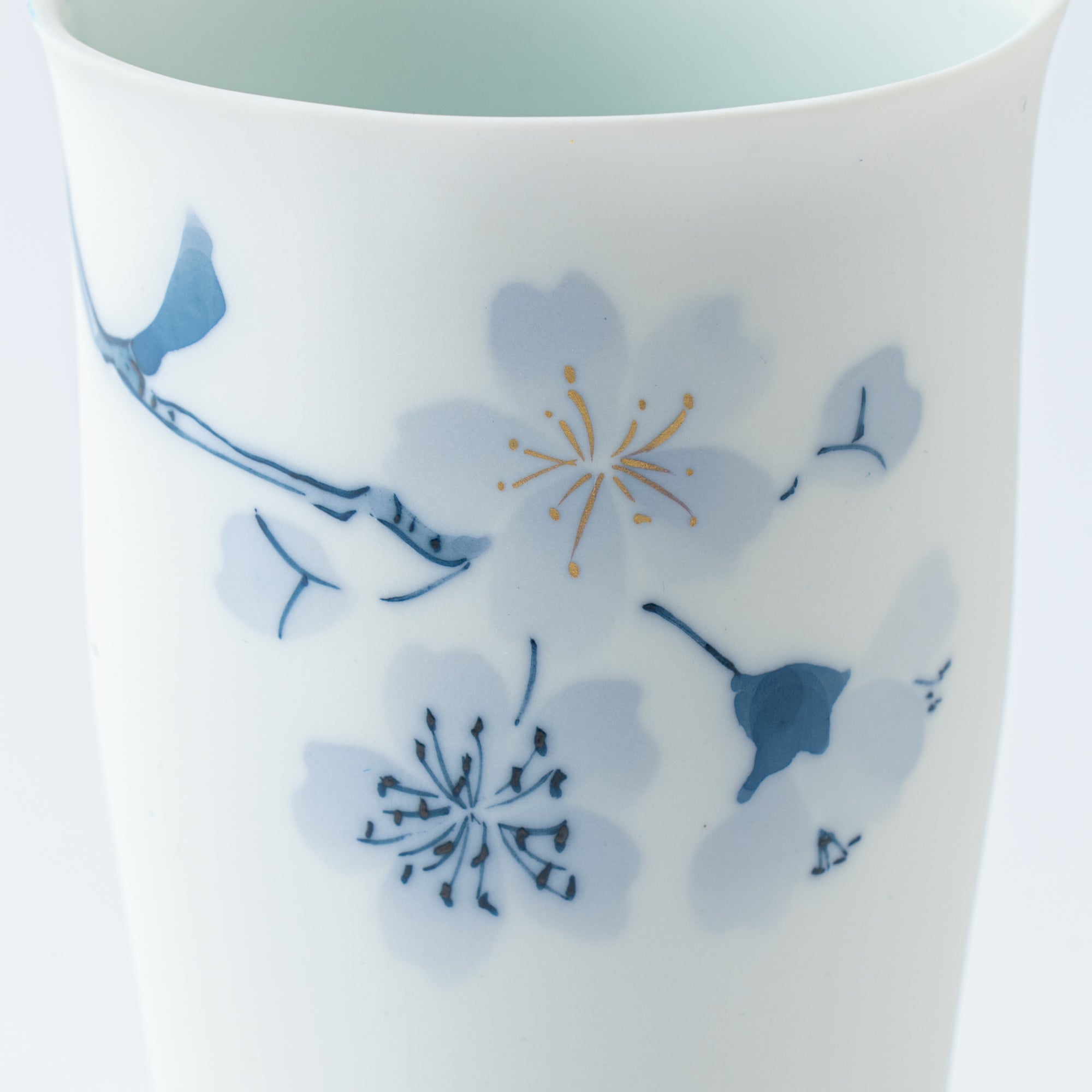
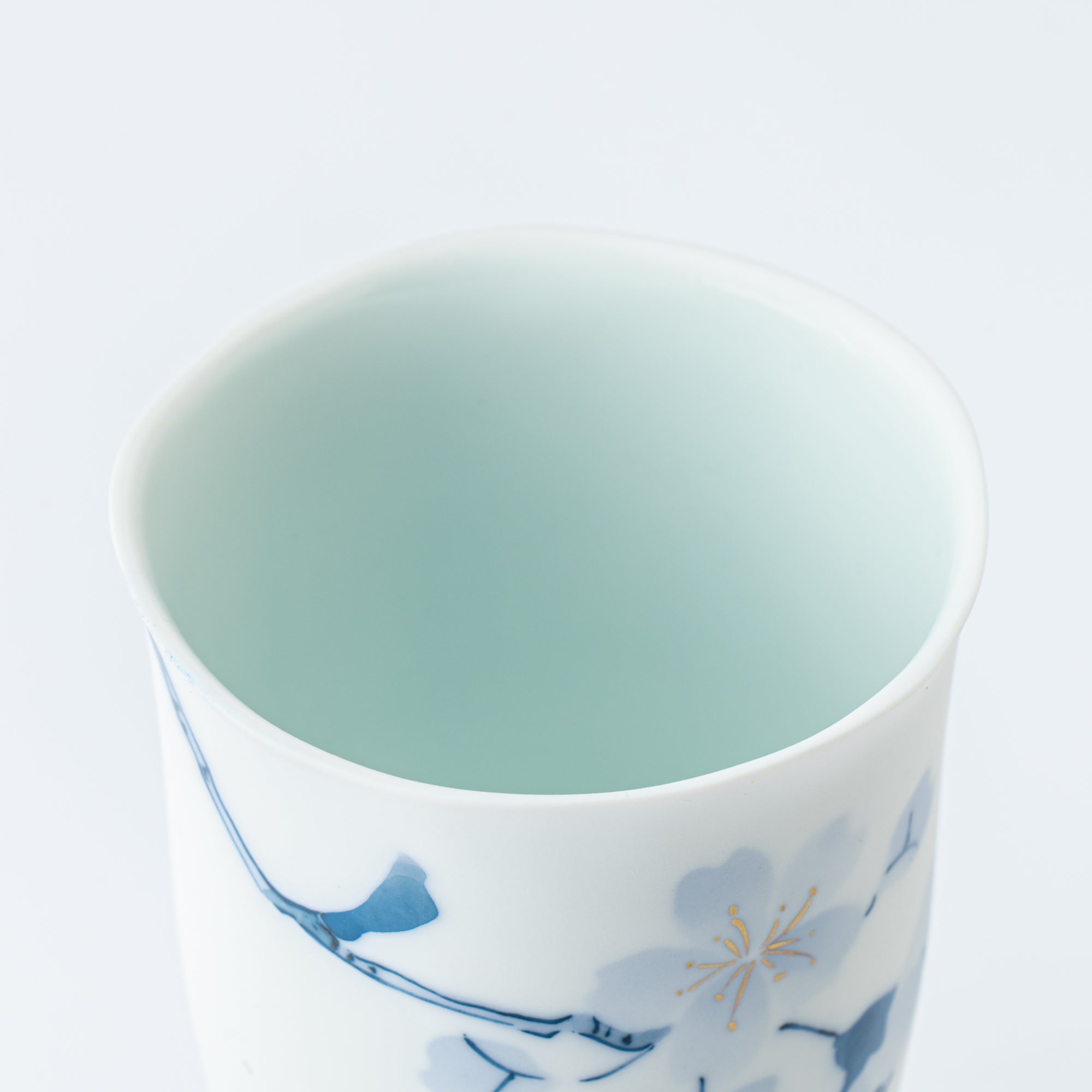
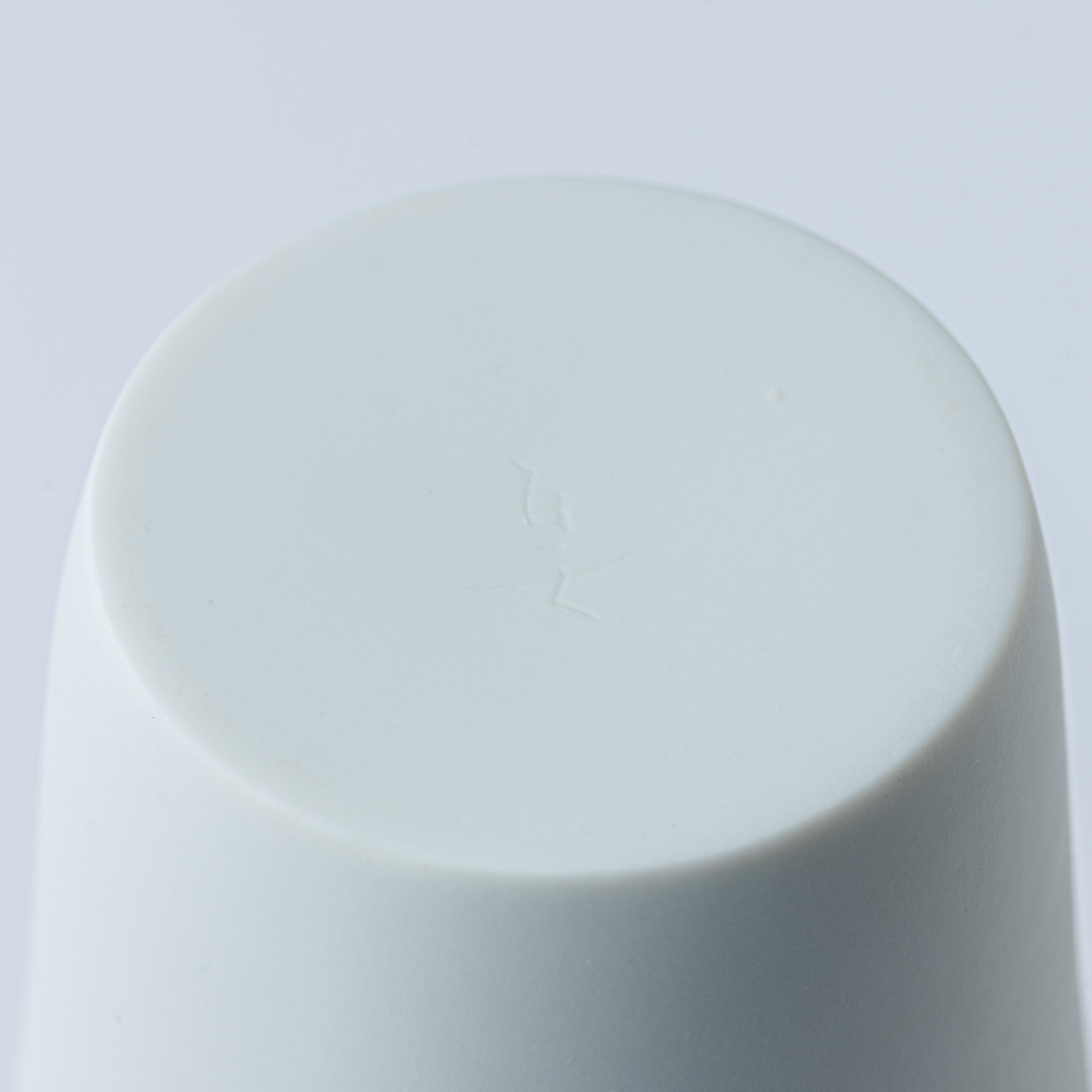
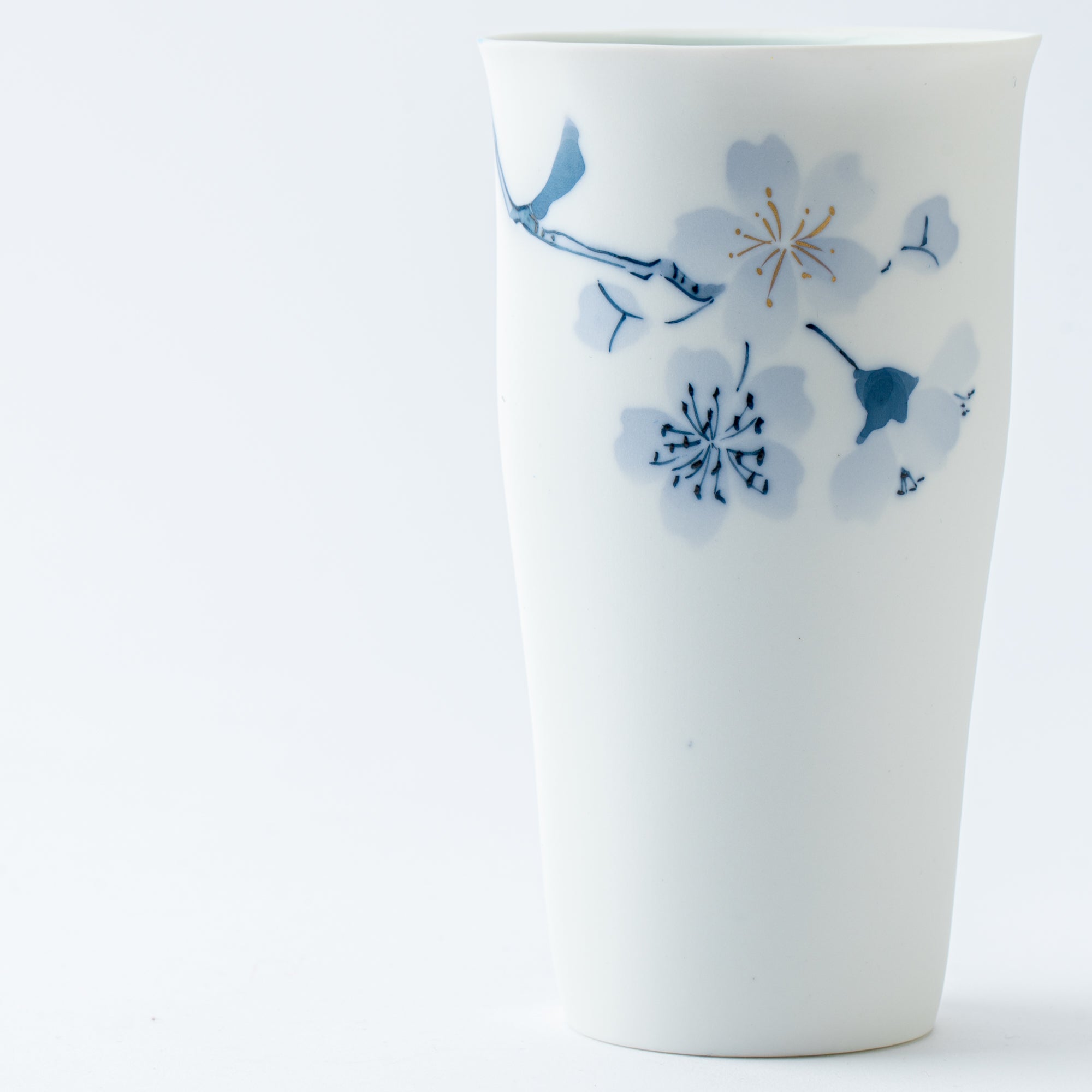
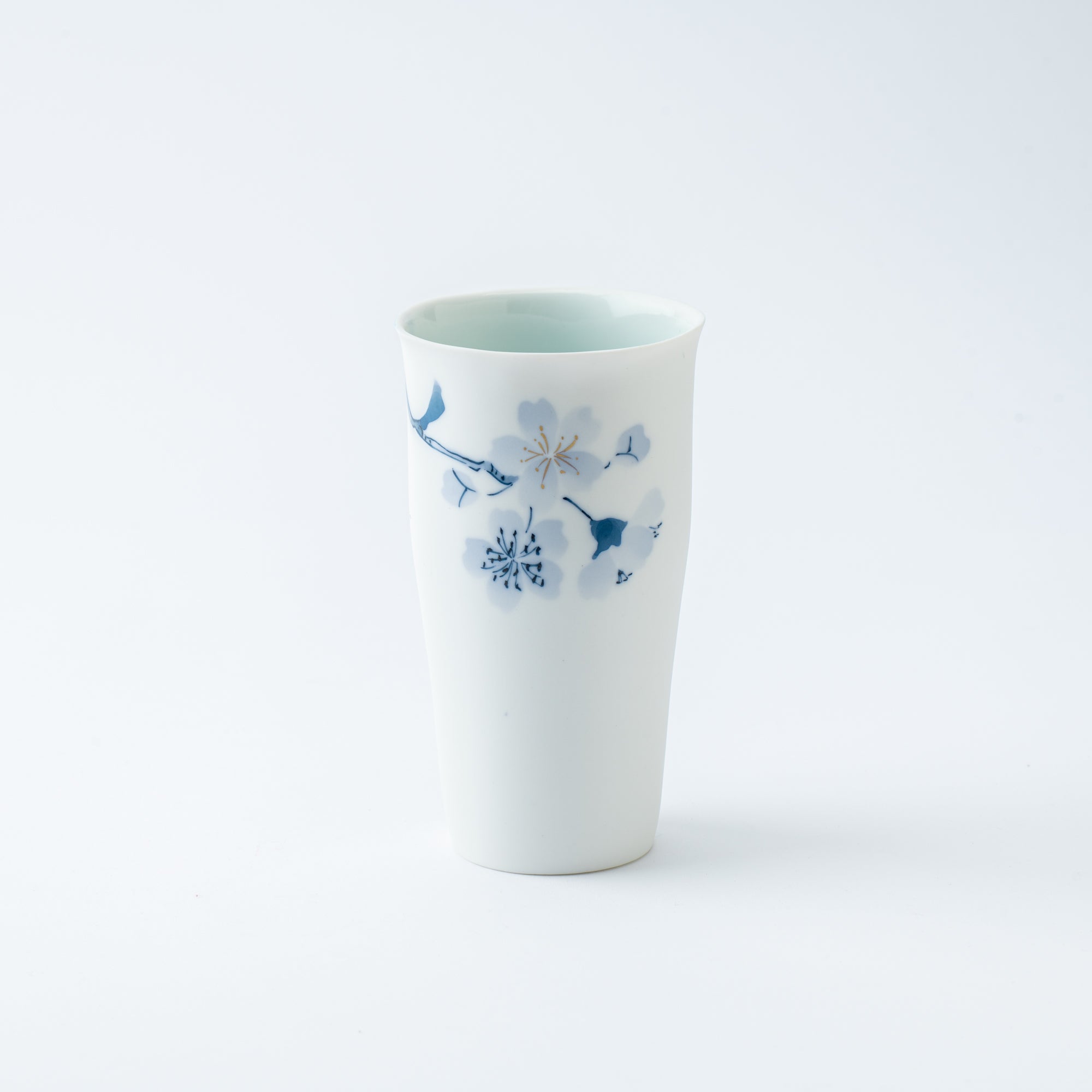
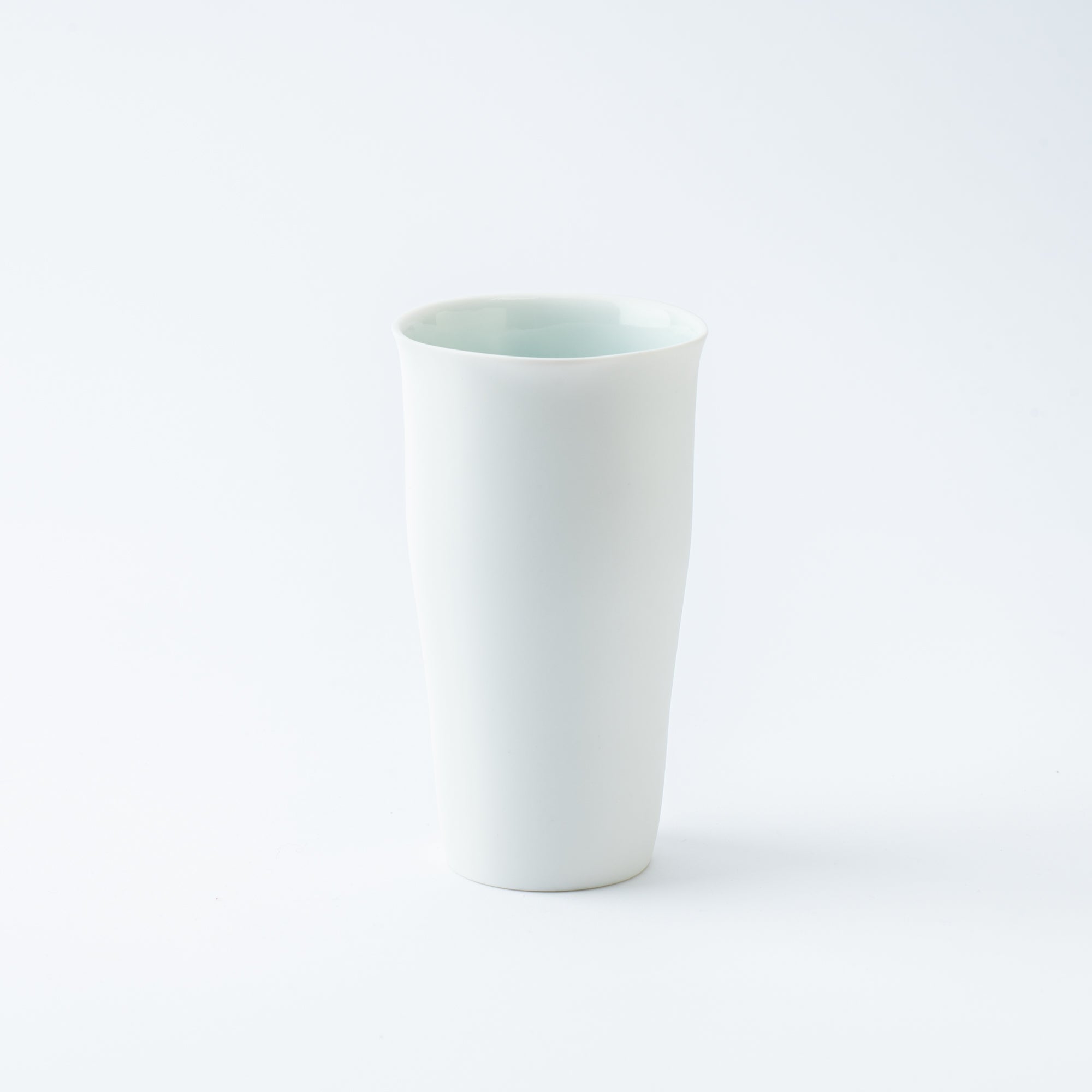
Blau Blume Sakura Bierbecher
Estimated Shipping Widget will be displayed here!
Bringen Sie den Charme der Sakura auf Ihren Tisch mit diesem Porzellan-Bierbecher, verziert mit Seto Sometsuke– der ikonische blau-weiße Stil. Ein einzelner Zweig Kirschblüten schmiegt sich sanft um die Oberfläche, mit blassen Blütenblättern, die sich neben einem Hauch von Gold und tiefem Kobalt entfalten, ein originelles Design für Musubi Kiln.
Der Rand ist leicht unregelmäßig, mit einer sanften Welligkeit, die die Wärme und den Charakter eines handgefertigtes Stück. Dieser vielseitige Becher ist nicht nur perfekt für Bier, sondern eignet sich auch für eine Vielzahl von Getränken, von Sprudelwasser bis hin zu Eistee.
Das Blumenmuster ist handgemalt mit gosu, ein traditionelles Kobaltpigment, das mit einem dicken Pinsel aufgetragen wird. Diese Technik erzeugt sanfte Farbveränderungen – von tiefem Indigo bis hin zu Hellblau – und fängt die Weichheit und Tiefe jedes Blütenblatts und Blattes ein. Zarte Details erstrecken sich anmutig über die Oberfläche und offenbaren die raffinierte Handschrift eines erfahrenen Handwerkers.
Wunderschön verpackt in einer passenden Schachtel mit demselben Sakura-Motiv ist diese Tasse ein aufmerksames Geschenk oder eine zeitlose Ergänzung für alltägliche Momente.
EINZELHEITEN
| Quantity |
1 |
| Size | D 7.7 cm (3.0 in) x H 14.0 cm (5.5 in) |
| Capacity | 330 ml (11.2 fl oz) |
| Weight | 190 g (6.7 oz) |
| Material | Porcelain |
| Package Type | Paper box |
| Microwave | No |
| Dishwasher | No |
Hersteller / Marke
SINGAMA wurde 1919 gegründet und ist ein familiengeführtes Töpferstudio in Shinano, einer kleinen Stadt in den nordöstlichen Hügeln der Stadt Seto in der Präfektur Aichi. Das Studio verwendet hochwertigen lokalen Ton und ist spezialisiert auf Seto Sometsuke– weißes Porzellan mit sanften, indigoblauen Mustern. Jedes Stück ist handbemalt und strahlt mit seinen sanften Formen und der Wärme, die es auf dem alltäglichen Tisch ausstrahlt, Behaglichkeit aus.
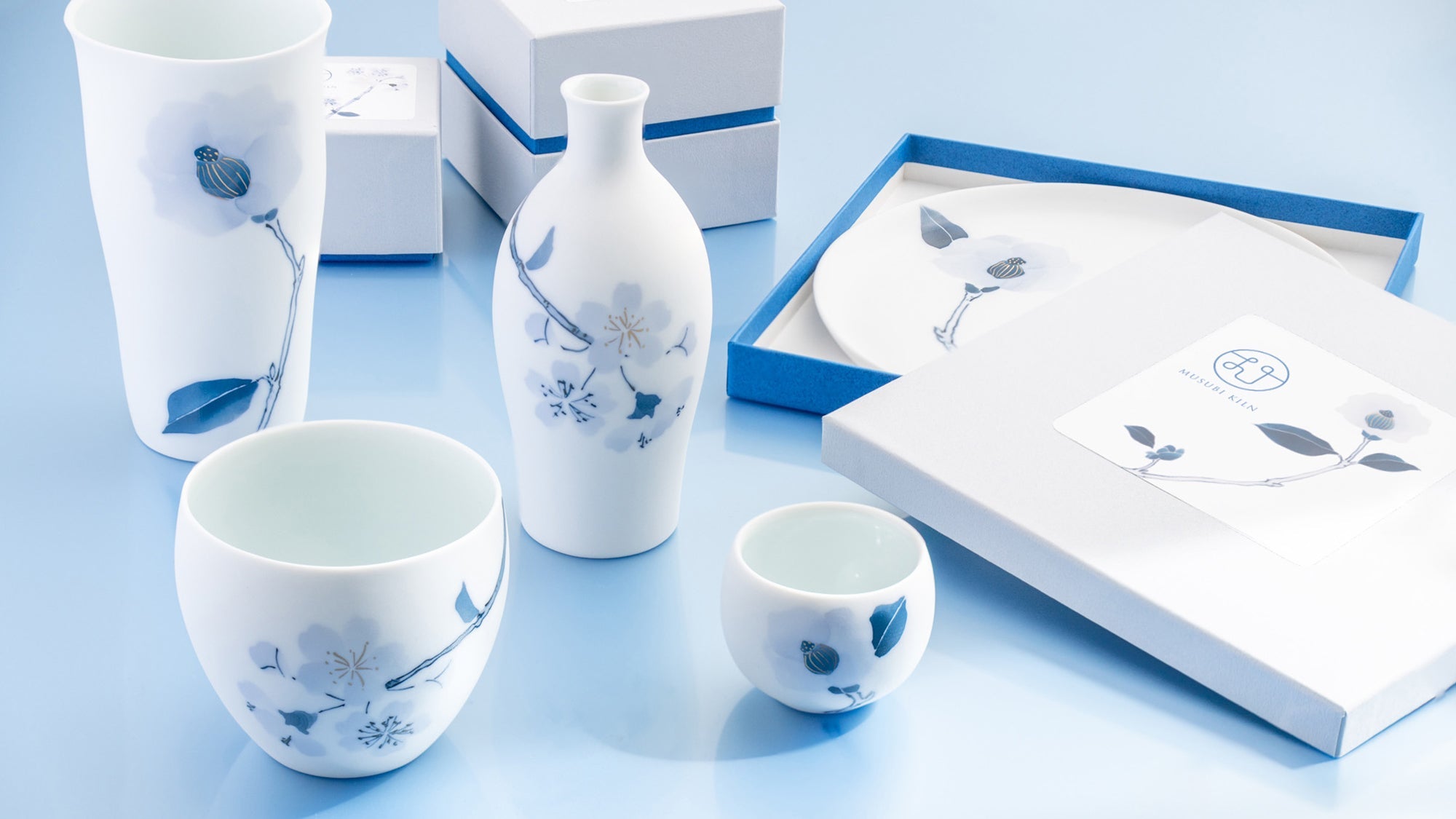
Kunsthandwerk
Seto-Ware wird in und um Seto City in der Präfektur Aichi hergestellt und umfasst eine breite Palette an Keramiken, die Jahrhunderte der Handwerkskunst und Innovation widerspiegeln. Als einer der sechs alten Brennöfen (Rokkoyo) Japans nimmt die Region Seto einen herausragenden Platz im keramischen Erbe des Landes ein. Sie war auch ein Pionier in der Massenproduktion von Porzellan, und ihre weite Verbreitung führte zum Wort setomono– ein Begriff, der auch heute noch allgemein für Keramik verwendet wird.
Seto ist eine der wenigen Regionen Japans, in der sowohl Steingut als auch Porzellan hergestellt werden und zeichnet sich durch eine bemerkenswerte stilistische Vielfalt aus. Von einfachem Alltagsgeschirr bis hin zu edleren Stücken prägt Seto-Keramik den Alltag mit Kreationen, die Tradition und Kreativität in Einklang bringen.
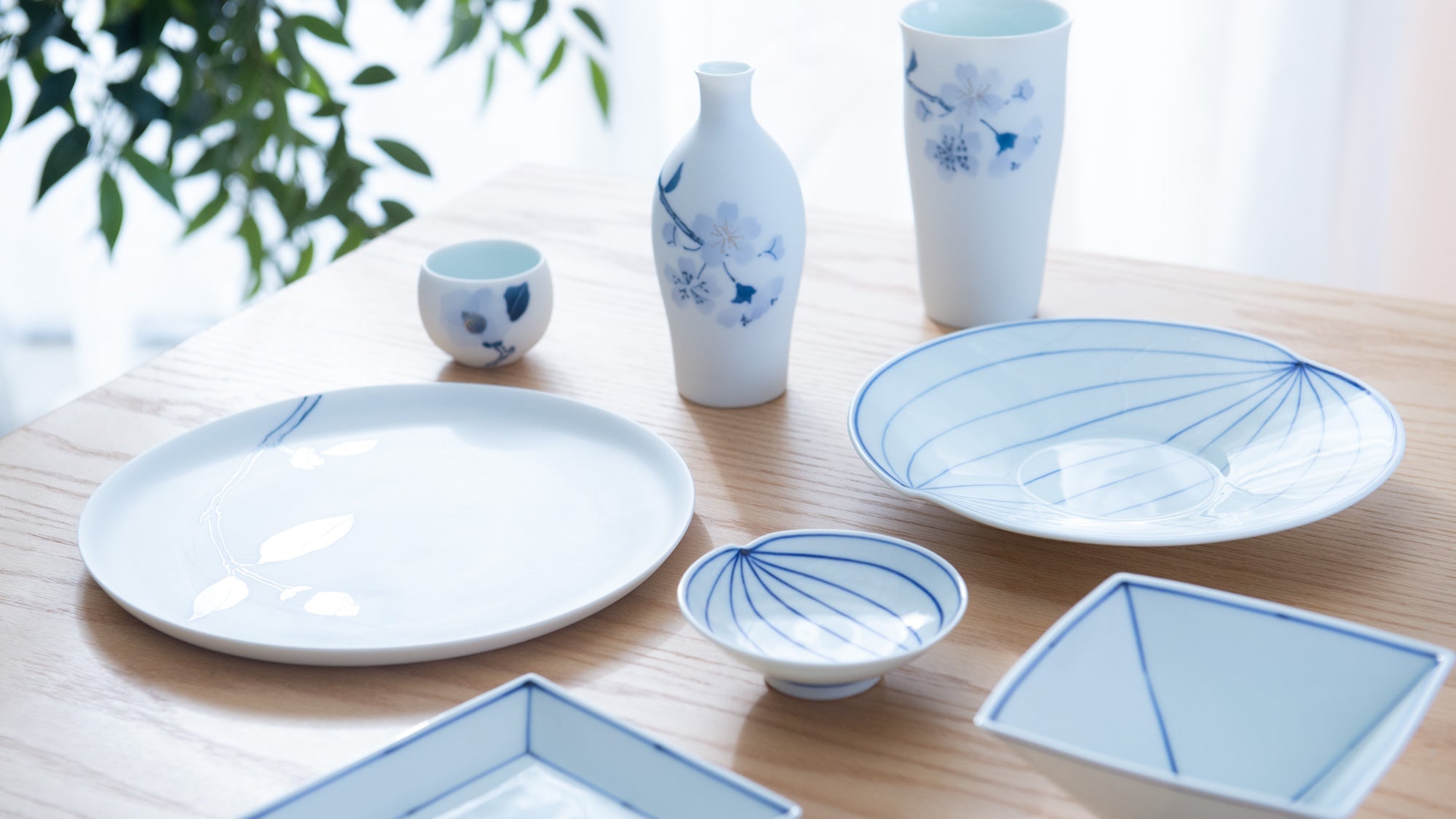
Anmerkungen
Optionen auswählen









Bier- und Shochu-Becher
Erleben Sie den authentischen Genuss von Shochu Mit unserer sorgfältig zusammengestellten Kollektion an Gläsern und Tassen. Diese Stücke wurden entworfen, um den einzigartigen Geschmack dieses beliebten japanischen Getränks zu unterstreichen. Sie vereinen traditionelle Handwerkskunst mit moderner Eleganz und eignen sich perfekt für legere und elegante Anlässe. Sie eignen sich auch perfekt zum Entspannen bei einem erfrischenden, kalten Glas japanischen Biers.
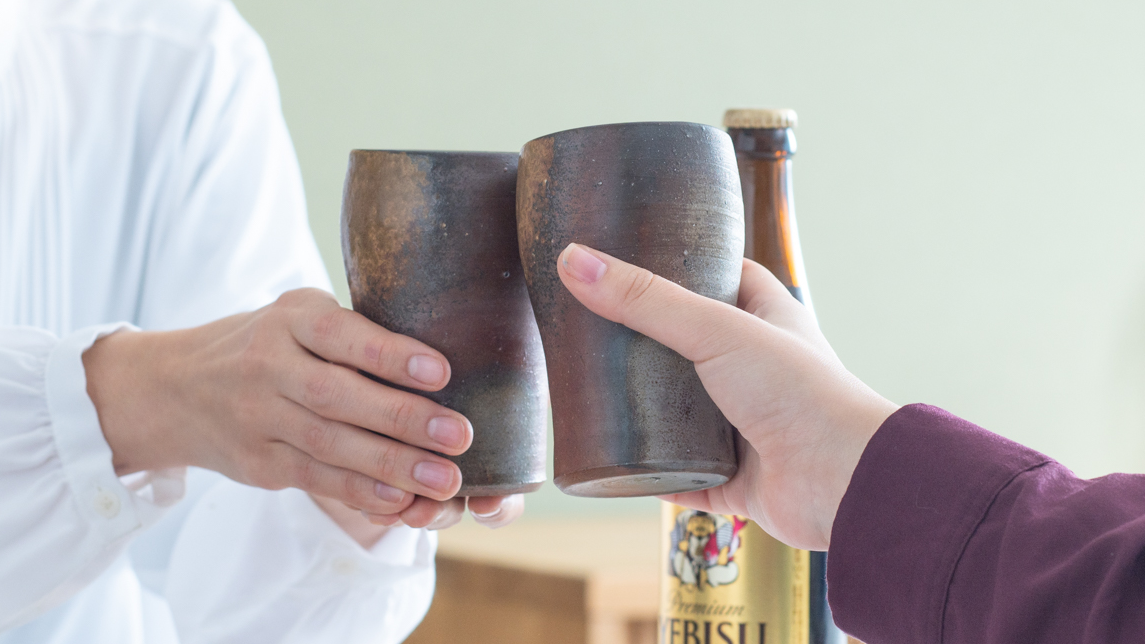
Sometsuke
Sometsuke ist eine dekorative japanische Töpfertechnik, auch bekannt als blau-weiße Keramik. Dieser klassische Stil wird weltweit für seine Eleganz geschätzt. Wir bieten eine große Auswahl an blau-weißen Tellern, Schüsseln, Trinkgeschirr und vielem mehr.
Die optisch ansprechende Farbgebung aus kobaltblauem und weißem Porzellan von Sometsuke bringt die Schönheit von Speisen zur Geltung und lässt sich problemlos mit einer Vielzahl von Geschirr kombinieren. Die feine, glatte Oberfläche und das leichte Tragegefühl sorgen für ein noch angenehmeres Benutzererlebnis.
